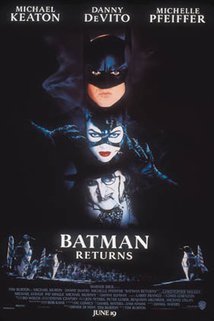 500 Days of Summer
500 Days of Summer (2009), is a romantic comedy by director Marc Webb. It is a nonlinear story about the rise and fall of a relationship between Tom and Summer, played by Joseph Gordon-Levitt and Zooey Deschanel. Other cast includes Clark Gregg, Geoffrey Arend and Matthew Gray Gubler.
500 Days of Summer is the story of Tom (Gordon-Levitt), a greeting card writer who aspires to be an architect. At work, he meets Summer (Deschanel), the boss' new secretary. Tom is convinced that he is meant to be with her, but Summer doesn't believe in love. Tom is set on convincing her that love does exist, and trying to keep their relationship (or not-relationship) alive.
Joseph Gordon-Levitt did a terrific job at portraying a madly in love guy who is struggling between making the "love of his life" believe he is happy with putting no labels on their relationship. We see him fall in love, we see him laugh, we see him break down...And we believe every bit of it. I can't say the same about Zooey Deschanel. She did not seem genuine in most of the film. It is hard to believe anything other than she does not want to be romantically involved with Tom. I did not detect much emotion in her character; she seemed indifferent about everything during most of the film. Then again, it could just be that that was her interpretation of the character, in which case it would mean that I just do not like Summer's personality. Geoffrey Arend did a great job at portraying McKenzie, one of Tom's best friends and the one branded as the single guy that will take what he can get. He is funny throughout the entire film. Matthew Gray Gubler also does a great job as Paul, another of Tom's best friends who has been in a relationship for years. His character is more of the nerdy type guy that is still dating his high school sweetheart.
The cinematography in this film is part of what makes it so unique. As mentioned earlier, the story is nonlinear, so we are constantly seeing days out of order. The film starts toward the end of their "relationship", and from there we jump to different days, but not in order. What makes it so easy to follow is the fact that the director adds an intro to each scene where we are told what day we will see next. It is a simple background with a number on it. Another interesting detail added in post production was that in these scenes, the background behind the number would be either dark or bright, so we would get an idea of what was coming up. If the background was darker, we could assume that the day was going to be a bad one; and if the background was brighter, we could assume that Tom's day was not going to go bad.
One of the main themes of
500 Days of Summer is the idea of finding your soul mate. Tom is convinced that he is meant to be with Summer, and he tries to keep their "relationship" going even though she does not want to put a label on it. He does it because, well, he loves her! But he slowly realizes that she doesn't feel the same way, and has to learn to let go. Sound familiar? It happens to all (if not all, most) of us at least once in our lives! You think you've found the one, you try to make it work but in the end it's just not meant to be. The filmmakers did a great job at conveying this theme, and as an audience member it is easy to relate to it. Another theme in the film is that there is a light at the end of the tunnel. This is not evident until the end, when Tom meets Autumn at a job interview and asks her out. Even though Summer found her soul mate and married him, Tom also met someone in the end. Just because it didn't work out with one person doesn't mean you won't find love ever again. Moving on may not be easy at first, but things get better, and you will eventually find happiness. The movie did a great job at portraying that at the end of the film!
If you're looking to watch a feel-good film, this is the perfect choice. It is different, mostly because of the nonlinear structure, which always keeps you interested because you have to pay attention to what day the story is on. It is so easy to relate to the characters because they seem like real people and do a very good job at convincing us that the story is true.
500 Days of Summer will make you laugh, cry, and want to cheer the characters on. It's not your traditional romantic comedy. A must see. 9 out of 10!

